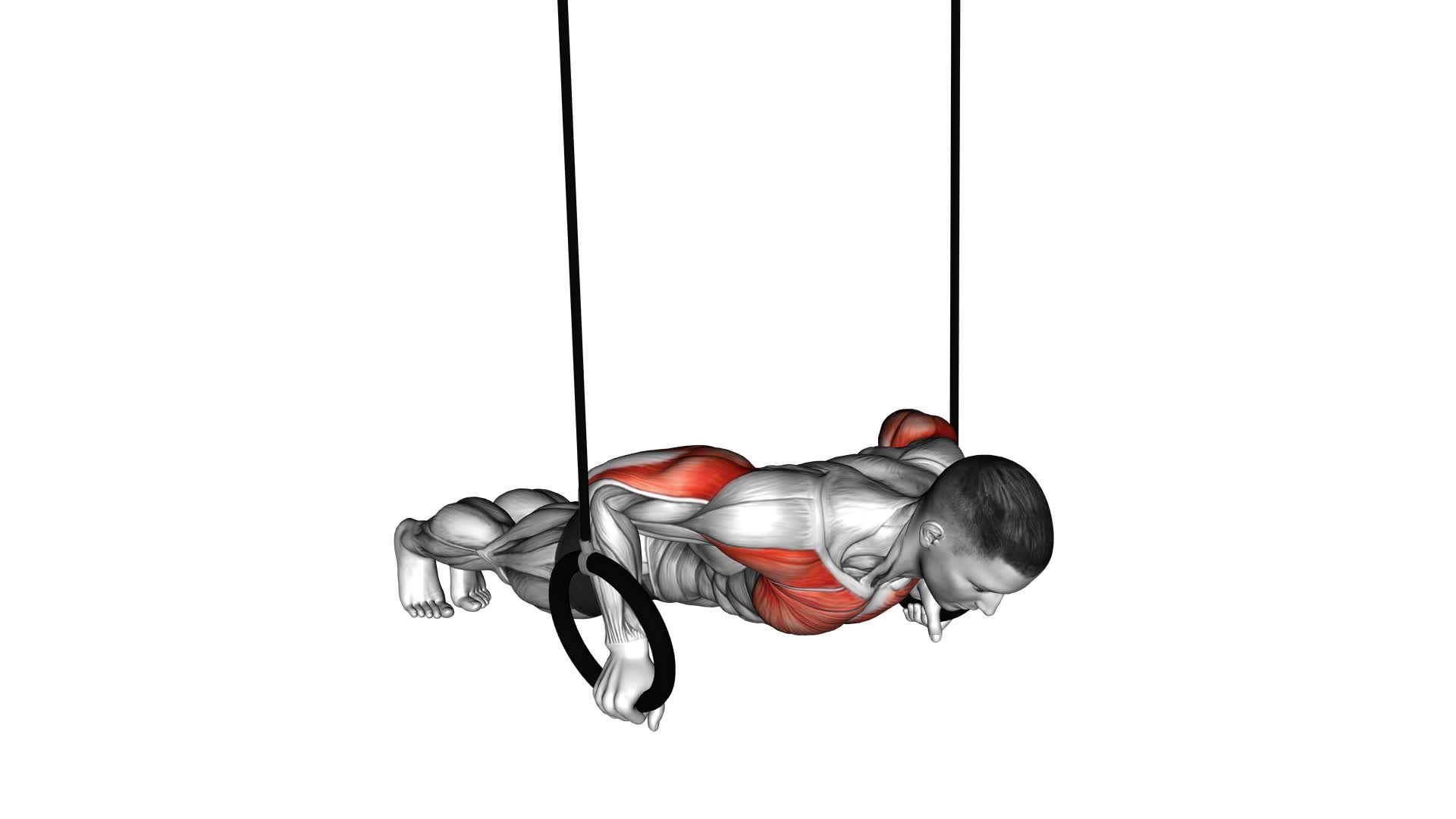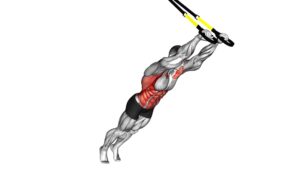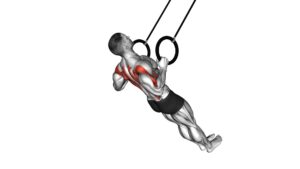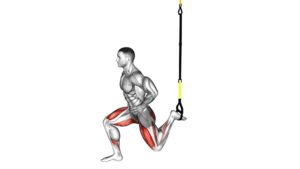Suspended Push-up – Video Exercise Guide & Tips

Get ready to take your push-ups to the next level with the suspended push-up. This challenging exercise targets your chest, arms, and core, giving you a full-body workout.
Watch This Exercise Video
In this video exercise guide, we'll show you proper form and technique, variations and progressions, and common mistakes to avoid.
Plus, we'll share tips for maximizing your workout, so you can get the most out of this effective exercise.
Get ready to feel the burn and see results with the suspended push-up.
Key Takeaways
- Engages multiple muscle groups simultaneously
- Increases upper body strength
- Improves core stability
- Provides a challenging and efficient workout
Benefits of Suspended Push-ups
To fully understand the benefits of suspended push-ups, it's important that you recognize how this variation of the exercise engages multiple muscle groups simultaneously. Suspended push-ups are an effective way to increase your upper body strength and improve your core stability.
When you perform suspended push-ups, you engage your chest, shoulders, and triceps, which are the primary muscles targeted in a traditional push-up. However, due to the unstable nature of the suspension straps, you also engage your core muscles, including your abs, obliques, and lower back, to maintain stability and control throughout the movement.
By engaging multiple muscle groups at once, suspended push-ups provide a more challenging and efficient workout for your upper body. This increased demand on your muscles leads to greater strength gains and improved muscular endurance.
Furthermore, the instability of the suspension straps forces your core muscles to work harder to stabilize your body. This not only improves your core strength but also enhances your overall balance and coordination.
In the subsequent section about proper form and technique, we'll discuss how to perform suspended push-ups correctly to maximize the benefits and minimize the risk of injury.
Proper Form and Technique
Now let's delve into the proper form and technique for performing suspended push-ups to ensure maximum effectiveness and minimize the risk of injury. When it comes to suspended push-ups, there are a few common misconceptions that need to be addressed. One of the most prevalent misconceptions is that suspended push-ups are only for advanced fitness enthusiasts. This isn't true. Suspended push-ups can be modified to suit beginners as well.
To perform suspended push-ups correctly, start by adjusting the straps to an appropriate height. Place your hands on the handles and assume a plank position with your body straight and core engaged. Slowly lower yourself down by bending your elbows, keeping them close to your body. Make sure you maintain control throughout the movement. Push yourself back up to the starting position by extending your arms. Remember to breathe steadily and avoid locking your elbows at the top.
For beginners, modifications can be made by adjusting the height of the straps or performing the exercise with your knees on the ground. This reduces the amount of body weight you have to lift, making it more manageable for beginners.
Variations and Progressions
Are you wondering how you can make suspended push-ups more challenging and continue to progress in your fitness journey? Luckily, there are advanced exercises and training modifications that you can incorporate to take your suspended push-ups to the next level.
Here are three variations and progressions that you can try:
- One-arm Suspended Push-up: This variation requires you to perform the push-up with only one arm, while keeping the other arm suspended. By working one arm at a time, you engage more muscles and increase the intensity of the exercise.
- Plyometric Suspended Push-up: To add an explosive element to your push-ups, you can incorporate plyometric movements. Start in a suspended push-up position, then explosively push yourself away from the ground, allowing your hands to leave the surface. Land softly back into the starting position and repeat.
- Decline Suspended Push-up: Elevating your feet on a stable surface, such as a bench or step, increases the difficulty of the push-up. This modification targets your upper chest and shoulders more intensely, providing a greater challenge for your muscles.
Common Mistakes to Avoid
One common mistake to avoid when performing suspended push-ups is improper hand placement. Placing your hands too far apart or too close together can compromise your form and limit the effectiveness of the exercise. To avoid this mistake, make sure your hands are shoulder-width apart and positioned directly under your shoulders. This will ensure proper alignment and engagement of the chest, shoulders, and triceps.
Another common mistake to avoid is letting your hips sag or sticking your butt up in the air. This can put unnecessary strain on your lower back and decrease the effectiveness of the exercise. To maintain proper form, engage your core and keep your body in a straight line from your head to your heels throughout the movement.
Modifications and adaptations can also help prevent common mistakes. If you're finding suspended push-ups too challenging, you can start by performing the exercise with your feet on the ground and gradually work your way up to the suspended variation. Additionally, using a TRX suspension trainer or resistance bands can provide added support and stability as you build strength and improve your form.
Tips for Maximizing Your Workout
To maximize your workout, incorporate these three key tips into your suspended push-up routine:
- Focus on proper form: Maintaining correct form throughout your suspended push-ups is crucial for maximizing results. Keep your body in a straight line from head to heels, engage your core, and avoid sagging or arching your back. This will ensure that you're targeting the right muscles and minimizing the risk of injury.
- Increase intensity gradually: As with any exercise, it's important to gradually increase the intensity of your suspended push-ups to continue challenging your muscles and improving your workout efficiency. Start with a comfortable difficulty level and gradually progress by adding more reps, increasing the suspension height, or incorporating variations like single-leg or plyometric push-ups.
- Rest and recover: Giving your body enough time to rest and recover between workouts is essential for maximizing your results. Overtraining can lead to decreased performance and increased risk of injury. Aim for at least one day of rest between suspended push-up sessions and listen to your body's signals. If you're feeling excessively sore or fatigued, take an extra day off or focus on other muscle groups to give your upper body a break.
Frequently Asked Questions
How Long Should I Rest Between Sets of Suspended Push-Ups?
Rest duration between sets of suspended push-ups depends on your fitness level and goals. Generally, it's recommended to rest for 30-90 seconds to allow your muscles to recover and replenish energy. This rest period helps maintain the intensity of your workout while preventing overexertion.
The benefits of suspended push-ups include improved upper body strength, core stability, and increased muscle activation. Incorporating adequate rest periods into your routine will optimize your results and prevent injury.
Can Suspended Push-Ups Help With Building Muscle Mass?
Suspended push-ups are a great exercise for building muscle mass. They target multiple muscle groups, including the chest, arms, shoulders, and core.
By incorporating variations of suspended push-ups into your strength training routine, you can challenge your muscles in new ways and promote muscle growth.
The benefits of suspended push-ups extend beyond muscle building, as they also improve stability, balance, and overall functional strength.
Incorporate these exercises into your routine to see results.
Are There Any Modifications for People With Wrist or Shoulder Injuries?
If you have wrist or shoulder injuries, there are modifications you can make to the suspended push-up exercise. Instead of putting weight on your hands, try doing push-ups on your knees or with a stability ball.
These alternatives will help you build strength without straining your wrists or shoulders. Remember to consult with a professional or physical therapist for personalized modifications and exercises that cater to your specific injury.
Stay safe and listen to your body.
Can Suspended Push-Ups Be Done by Beginners?
Yes, suspended push-ups can be done by beginners. When starting out, it's important to focus on proper form to avoid injury. There are variations of suspended push-ups that can be less challenging for beginners, such as placing your feet on the ground instead of using the suspension straps.
Remember to engage your core, keep your body in a straight line, and lower yourself down with control. Practice regularly to build strength and progress to more advanced variations.
How Many Repetitions Should I Aim for When Doing Suspended Push-Ups?
When doing suspended push-ups, it's important to focus on the number of sets and proper form. Aim to gradually increase the number of reps you do in each set as you build strength and endurance.
Start with a manageable number, like 8 to 10 reps per set, and gradually increase that number over time.
Remember to maintain proper form throughout the exercise to ensure maximum effectiveness and minimize the risk of injury.
Conclusion
To maximize your workout and challenge your upper body strength, consider incorporating suspended push-ups into your routine. This exercise offers numerous benefits, including improved core stability and increased muscle activation.
By maintaining proper form and technique, avoiding common mistakes, and gradually progressing to more advanced variations, you can enhance the effectiveness of this exercise.
Remember to consult with a fitness professional for personalized guidance and to ensure safety during your workouts.

Author
Years ago, the spark of my life’s passion ignited in my mind the moment I stepped into the local gym for the first time. The inaugural bead of perspiration, the initial endeavor, the very first surge of endorphins, and a sense of pride that washed over me post-workout marked the beginning of my deep-seated interest in strength sports, fitness, and sports nutrition. This very curiosity blossomed rapidly into a profound fascination, propelling me to earn a Master’s degree in Physical Education from the Academy of Physical Education in Krakow, followed by a Sports Manager diploma from the Jagiellonian University. My journey of growth led me to gain more specialized qualifications, such as being a certified personal trainer with a focus on sports dietetics, a lifeguard, and an instructor for wellness and corrective gymnastics. Theoretical knowledge paired seamlessly with practical experience, reinforcing my belief that the transformation of individuals under my guidance was also a reflection of my personal growth. This belief holds true even today. Each day, I strive to push the boundaries and explore new realms. These realms gently elevate me to greater heights. The unique combination of passion for my field and the continuous quest for growth fuels my drive to break new ground.







